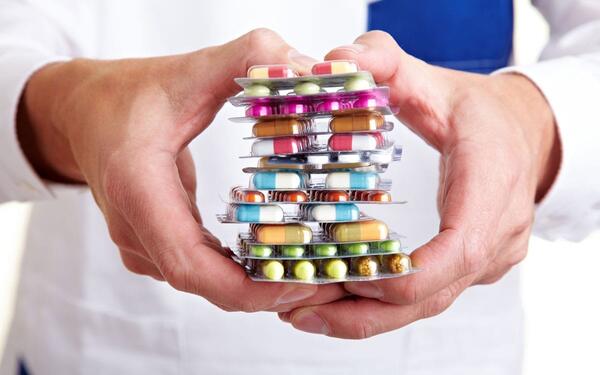
How to Identify Counterfeit Medications
In today's world, a tremendous range of medications are used to treat a range of health conditions and illnesses. However, a growing trend has begun to jeopardize the safety and effectiveness of medical treatments: counterfeit medications. While it may initially seem harmless for there to be replicas of mainstream drugs and treatments, these imitations can cause significant harm. Counterfeit medications can contain ineffective ingredients, incorrect dosages, or even harmful substances. Using counterfeit medications can have adverse effects such as treatment failure, antibiotic resistance, and even allergic reactions.
How Widespread is the Use of Counterfeit Medications?
Counterfeit medications come in as many forms as legitimate medical treatments. You might find knockoff pills, liquids, capsules, or even injectables. Counterfeit medications can be sold directly through illegal online markets or gradually pumped into a legitimate supply chain by unscrupulous parties. Counterfeit medications are problematic within the U.S. and foreign countries, with a significant percentage of medications in parts of the world being counterfeits.
Recently, news in the U.S. has been abuzz with stories about counterfeit Ozempic, a popular drug primarily used for diabetes management. This has resulted in many Ozempic injury lawsuits, along with lawsuits against distributors of the fake medication.n
Risk Factors Associated With Counterfeit Drugs
There can be severe consequences affiliated with the use of defective or counterfeit medications. One of the “best” outcomes is that the treatment is less effective than intended, if it is effective at all. This is not ideal, of course, as it leaves the initial medical condition untreated. In this scenario, however, the patient is at least not exposed to additional harm or risk. However, the situation can easily become a lot more serious. Incorrect doses in a counterfeit medication can lead to underdoses or a fatal overdose. Harmful ingredients substituted into the medication can cause allergic reactions or organ damage.
Counterfeit antibiotics are particularly concerning, as their use may cause bacteria to develop resistance to legitimate drugs in the future. This phenomenon, known as antibiotic resistance, poses a serious threat to communities across the world. As bacteria gain resistance to antibiotics, the number of successful treatment methods for patients in ill health will dwindle.
Sourcing Medications Safely
At this point, you may be wondering how you can stay safe from counterfeit drugs. Although there is no way to entirely reduce the risk of exposure to knockoff medications, you can take steps to lower your chances of receiving a fake prescription. The most important thing you can do is to only purchase medications through licensed retailers and pharmacies. Not only do these establishments source their medications from legitimate distributors, they have a responsibility to ensure the authenticity and safety of their treatments for consumers. You may not get this same level of product quality assurance from another seller.
Beware if you choose to purchase medications online. Some online pharmacies operate legally and source medications appropriately, but others may sell counterfeit drugs. Be extremely wary if you choose to buy legitimate medications online. Only use reputable online pharmacies with a proven history of prioritizing patient safety.
How Can You Identify a Counterfeit Medication?
In some cases, counterfeit medications can be packaged and presented as near-identical to the treatment they are mimicking. This does make it incredibly difficult to figure out what medications are genuine and which are fakes. However, other fake medications may have subtle signs that hint at their inferior quality. Here's what to watch for:
- Packaging Discrepancies: Legitimate medications should be sealed in professional packing with clear instructions on intended use. You should carefully inspect any new medication’s packaging for signs of tampering, from broken seals to misspellings on the label.
- Medication Appearance: Examine the medication itself. Be alert for anything unusual, especially if you’ve taken it before. Is this new supply a different size, color, or shape than what you are used to? Unexplained changes in appearance or odor can be a warning sign.
- Labeling Inconsistencies: Read the label carefully. Be alert for misspellings of the drug name, inaccurate manufacturer information, or a nonsensical expiry date. The information on the medication should match exactly with your doctor's prescription.
If you observe anything alarming, do not consume the medication as it may not be safe. Get in touch with the healthcare provider or pharmacy that provided you with the medication and explain your concerns.
Knowledge & Communication Can Keep You Safe
Knowing the potential signs of counterfeit medications and discussing concerns with your doctor or pharmacist is vital to reducing the risks associated with fake medications. If you have any concerns about medication authenticity, bring them to your healthcare provider. Pharmacists are trained to identify counterfeit medications and can help you determine whether your treatment is legitimate or not.
In many cases, you are able to report suspected counterfeit medication to the relevant local or regional authorities. If you believe you have encountered a counterfeit medication, you should promptly file a report about it. By reporting counterfeit medications, you help authorities discover how it was distributed and how future shipments can be halted.
Consumer Awareness is Key to Reducing Risk
At the end of the day, there are multiple safeguards in place to ensure that patients receive high-quality, effective medications. However, this does not mean that there is no risk of counterfeit drugs in circulation. By making yourself more aware of the risks of counterfeit medications and learning how to spot potential fake drugs, you protect your wellbeing. We hope this article helps you stay safe and identify anything suspicious the next time you pick up a prescription!